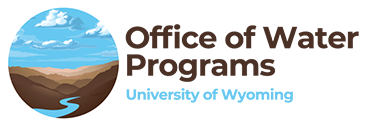Current WRP Projects: Project 64
High resolution upland and riverbank erosion monitoring to inform best management practices that seek to reduce sediment accumulation at the Willwood Dam
- Project Number: 64
- PIs: Austin Madson, UW Wyoming Geographic Information Science Center; Di Yang, UW Wyoming Geographic Information Science Center
- Period: July 2023 - June 2026
Abstract:
Increased sediment loading within the Shoshone River has vast implications for the diverse array of both anthropogenic and natural uses of this complex river system. This is especially true for the stretch of the Shoshone River downstream of the Buffalo Bill Reservoir and beyond the Willwood Dam (WD) where a multitude of human and natural users are reliant on the health of these hydrologic systems. River impoundments and other forms of human infrastructure (e.g., irrigation diversion) can be negatively affected by increases in sediment loads and subsequent buildup. Further, the remediation efforts (e.g., dam raising, dredging) of these issues costs a considerable amount of both human and monetary capital. Increases in sediment loading and turbidity can have a harmful impact on a wide variety of ecologically important aquatic invertebrate and fish species as well as downstream human use. Changes in both vegetation cover and type coupled with complicated anthropogenic uses (e.g., recreational, agricultural) can greatly increase streambank and watershed erosion rates, which can directly lead to increases in riverine sediment loading and turbidity. This work seeks to quantify and examine erosion and sediment loads from selected high priority contributing areas (e.g., McCullough Peaks and portions of the Shoshone River) in order to increase the understanding of sediment sources above the WD. We will quantify and analyze areas of increased erosion and investigate the connections between bank and watershed erosion rates with different vegetation types and extent as well as with the multitude of land use/land cover (LULC) types within the study area. More specifically, we propose to accomplish the following two key tasks in order to satisfy our main goals as laid out above. Task 1: Acquire early- (spring) and late-season (fall) lidar and multispectral datasets using an uncrewed aerial vehicle (UAV) to derive very high resolution 3D point clouds, digital surface models (DSMs), and LULC products. Create volumetric erosion change and erosion rate products from the DSMs and point clouds. Task 2: Analyze erosion change products to locate and quantify regions of increased erosive activity. Further examine the erosion change products in conjunction with the coincident LULC products to determine erosion rates for, and look for connections between, varying vegetation types (species level) and densities, slopes, land use (e.g., human recreational, riparian livestock use, surface mining, irrigation ditches), and binary anthropogenic/natural sources. Results from this work will help to fill in key knowledge and data gaps that will allow for a more-complete understanding of the varied sediment sources to the Shoshone River above the WD. This research will greatly aid the ongoing work by Willwood Working Group #3 (as well as Groups 1 & 2), which is a multi-agency effort under the umbrella of the Wyoming Department of Environmental Quality that seeks to increase the understanding of sediment loading and its impacts within our study area. Methodologies and results from this study will also have direct implications for similar watersheds and impoundments within the state of Wyoming and will be of a benefit to both public and private landowners throughout the state. Lastly, this proposal will provide the necessary funding required to support applied water related training and education for two graduate students (MS and PhD) and multiple lab/field technicians within the Hydrologic Science Program and the Wyoming Geographic Information Science Center (WyGISC) at the University of Wyoming.

